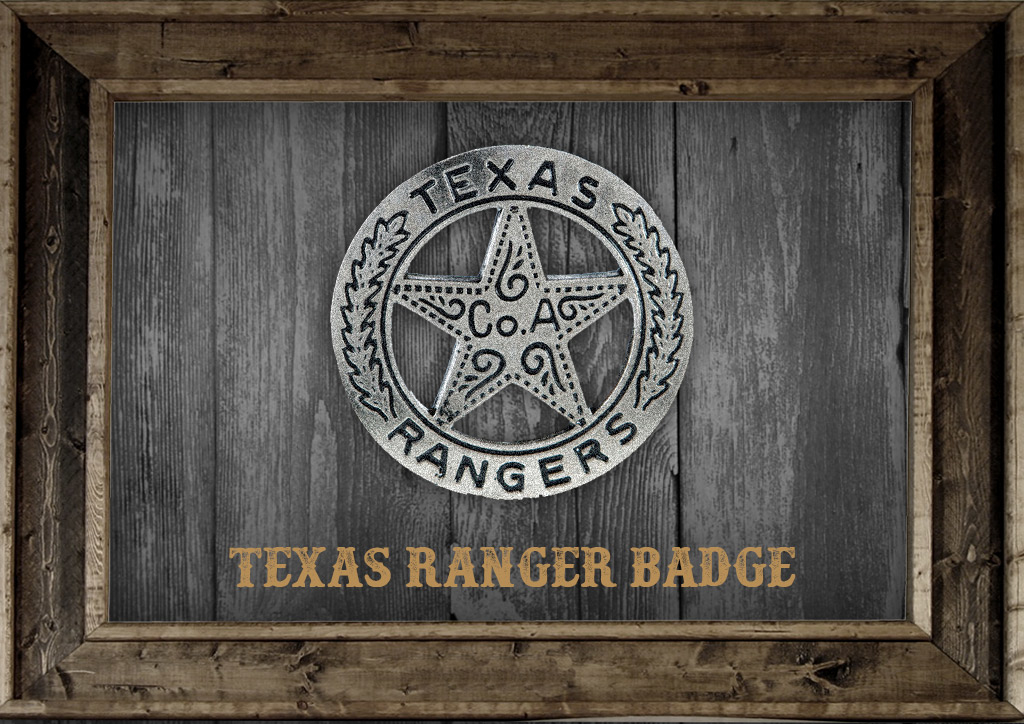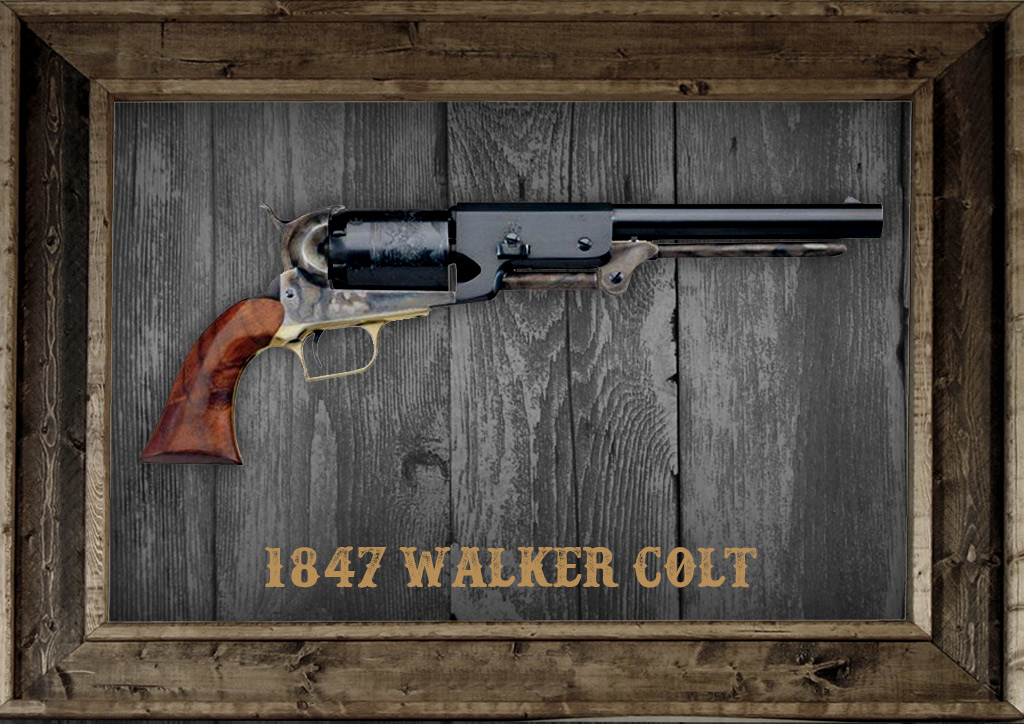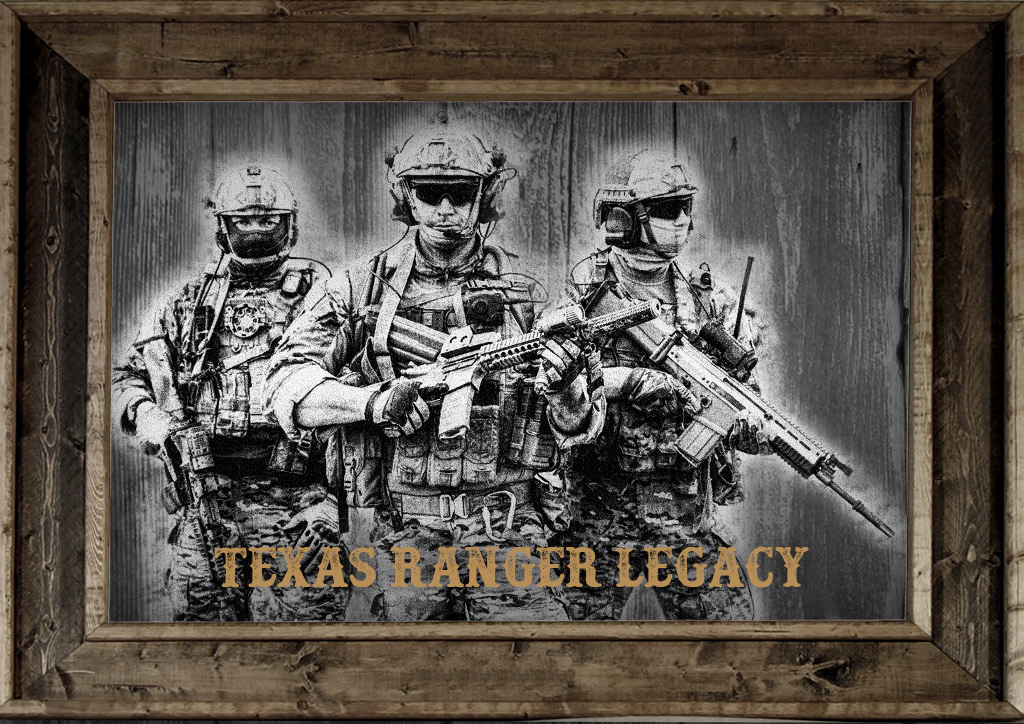

There are few Americans who have not heard of the Texas Rangers. Since the dawn of television (and before that, on the radio) the media chronicled their exploits in a variety of shows.
Here are some you might remember:
- The Lone Ranger: The only survivor of a massacred Ranger patrol, he and his Indian companion Tonto fought lawlessness from 1949 until 1957.
- Tales of the Texas Rangers: The series ran from 1955 to 1958, and some of its shows were reenactments of actual Texas Ranger cases.
- Laredo: The series aired from 1965 to 1967 and told the story of three Texas Rangers who battled rustlers and bank robbers in the Mexican border town of Laredo.
- Walker, Texas Ranger: The show revolved around Sgt. Cordell Walker, a Texas Ranger played by Chuck Norris, who uses his martial arts skills to enforce the law in the Dallas-Fort Worth area. The series ran from 1993 to 2001.
The Real Texas Rangers: Est. 1823
Real Texas Rangers History

The original star badge of the Texas Rangers was actually a modified Mexican silver dollar, it became a symbol of law and order throughout the West and beyond.
Created by Stephen F. Austin, the unofficial “Father of Texas,” the Rangers initially consisted of only ten men. They had the responsibility of protecting several hundred families, mostly refugees of the Mexican War of Independence, from local tribes of Indians.
In 1835, the Rangers were formally established, and within two years their ranks had expanded to over three hundred men.
Today, the Texas Rangers conduct various types of criminal investigations, hunt down wanted felons, put down major disturbances, and assist local law enforcement in fighting crime and violence.
But what they do today was preceded by a colorful history, in which the Rangers gained fame throughout the world as a formidable fighting force. But the Rangers didn’t exactly hit the ground running. It would take some time before they would build momentum toward their legendary status.
Payrolls & Politics
Despite having official authorizations, the Rangers didn’t make much of a mark in the early going. Both officers and enlisted men earned $1.25 per day but were required to supply their own horses, arms, and rations from it.
During the Texas Revolution of 1835-36, the Rangers were limited to serving as couriers and scouts. After the Alamo fell, they escorted fleeing refugees across muddy trails, retrieved cattle, and destroyed equipment that had been left behind. They were performing this escort duty during the Battle of San Jacinto and were unable to participate.
Their duties did not pick up noticeably under the newly-elected president of the Republic of Texas, Sam Houston. That’s because Houston preferred to maintain friendly terms with the Indians. He favored government frugality during his two years in office.
Texas Rangers In Action

The 1847 Walker Colt revolver was a fearsome weapon capable of causing battlefield casualties from 100 yards away.
When Mirabeau B. Lamar followed Sam Houston to the presidency in 1838, the role of the Rangers changed immediately. Changes to the frontier policies of the Republic of Texas soon followed. After expanding their numbers with several additional companies, Lamar sent the Rangers to wage all-out war against the Cherokee and Comanche tribes. By the end of Lamar’s presidency in 1841, he’d weakened most of the powerful tribes significantly.
By the time Sam Houston was re-elected, he was convinced the Rangers were an efficient and inexpensive way to protect the frontier. Under the leadership of Captain John “Jack” Hays, they became a tough and formidable contingent. Hayes instilled the “esprit de corps” that would become their trademark. In the next few years, the Rangers played a prominent part in deterring the Mexican invasions of 1842. They also protected the citizens of Texas from Indian attacks.
By 1844, the Rangers recruited additional muscle including Samuel Walker, an Army Captain who served in multiple conflicts. Walker embraced the modern design of the Colt Revolver. He often won battles by sheer firepower when he and the other Rangers were greatly outnumbered. Walker’s suggestions to Samuel Colt about the revolver design became permanent upgrades, the .44 caliber “Walker Colt” was known as the deadliest weapon of the Mexican-American War.
The Texas Rangers At War
Texas Rangers In The Mexican War
The state assigned General Zachary Taylor commander of the force after the annexation of Texas in late 1845. By the spring of 1846, his Corpus Christi base camp housed almost half of the U.S. Army.
The Mexican War that followed in that same year saw the Texas Rangers perform commendably. Their performance was noteworthy especially during the battles of Palo Alto and Resaca de la Palma. Taylor overcame some serious logistical problems by sending the Rangers to find the best route to the key city of Monterrey. With their help, Taylor’s troops stormed and seized the city with few U.S. casualties.
Mexican guerrillas began taking a toll with isolated attacks on Americans. So, Jack Hayes commanded the Texas Rangers to put an end to them. The Rangers used methods that were often described as harsh and ruthless, but gained an effective reputation. It resulted in fearful Mexicans calling them “Los diablos Tejanos”—the Texas devils.
Texas Rangers In The Civil War
When the Civil War broke out in 1861, most of the Rangers joined the Confederate Army. This left young boys, old men or those rejected by the Confederate Army to protect the frontier. Essentially, there were no official Texas Rangers until almost ten years after the bloody war had ended.
Texas Ranger Forces
In 1874, the Legislature created two Ranger forces to handle their most troubling problem—bad Texans. The Frontier Battalion, led by Major John B. Jones, and the Special Forces, under the command of Capt. Leander McNelly would become engaged in some of the most famous cases in the history of the Old West. Some of the facts of the period were embellished to help create the Ranger legend, but the essentials of these unstable times were fairly accurate.
Frontier Battalion Ranger John B. Armstrong captured John Wesley Hardin, a gunslinger who allegedly killed 31 men, after a gun battle that left one of Hardin’s companions dead. The battalion also participated in over a dozen battles with Comanche and Kiowa warriors. When the Rangers were through, over 3000 desperados like Hardin were gone. He rendered most of the tribes in the region powerless.
The Special Force fought Juan Cortina for eight months between the Rio Grande and Corpus Christi. The efforts restored a semblance of order to that area. In 1875, the Force boosted its terrifying reputation by stacking twelve dead cattle rustlers in the Brownsville square. The display was in retaliation for the death of one Ranger.
Task Force Evolution

Captain Bill McDonald heralded in a new era for the Rangers by representing them as a professional lawman for hire.
“No man in the wrong can stand up against a fellow that’s in the right and keeps on a-comin’.”
―
As civilization arrived on the frontier, the need for the Rangers’ type of law enforcement diminished. For the next thirty years, their prestige declined. Although, they did contend with occasional Mexican and Indian raiders while chasing down cattle thieves and protecting African Americans from lynch mobs.
As the 20th century arrived, the Rangers’ prominence had dwindled to a point where many critics began questioning the need for them. And in 1901, the legislature reduced their ranks to four companies. A captain led each company and he was allowed to recruit no more than twenty men.
Captian Bill McDonald, a Texas Ranger, known as one of the four “Great Captains” saw the importance of diversification in the ranks. Fewer men and more public scrutiny meant picking battles carefully, Bill used his charisma and the Ranger’s good name to move the division into the 20th century. McDonald later became a bodyguard for U.S. Presidents Theodore Roosevelt and Woodrow Wilson.
Border Patrol & National Security

The Winchester Model 1895 rifle was designed by John Moses Browning, it was capable of firing powerful rimmed cartridges thanks to its non-detachable box magazine.
In 1910, with a revolution against President Porfirio Díaz in full swing, citizens on both sides of the border became anxious, and the Rangers were called upon to quell troublesome Mexican nationals along the Rio Grande. These bloody fights were once again marked by violence and brutality.
As World War I arrived in 1914, the Rangers were kept busy with problems along the border. They were ferreting out German spies attempting to enter the U.S. and American draft dodgers trying to flee it. After the Mexican revolutionary Pancho Villa led a raid into New Mexico in 1916, the already callous feelings between the two countries deteriorated even further. By 1919, regular and special Ranger companies had killed about 5,000 Mexicans, which drove relations to rock bottom.
As a result of what many considered disreputable behavior on the part of the Rangers, Texas lawmakers decided that their four companies would be reduced from twenty to fifteen recruits per unit. And to entice men of higher moral character to enlist, they introduced higher wages, while establishing a system through which citizens could file complaints against the Rangers.
Prohibition Era: Rangers Back On The High Road

A popular trench gun in World War I, the 12-Gauge Model 1897 shotgun became the riot gun of choice by law enforcement agencies.
With excellent leadership and tighter controls, the Rangers were once again a well-respected and highly disciplined force during the 1920s. After the government enacted Prohibition, the state assigned Rangers to patrol the Rio Grande. They looked mainly to stop tequila smugglers and the growing problem of cattle rustling. They often sent Rangers to Ku Klux Klan rallies and labor protests to help prevent property damage and personal injuries. And during the oil boom, the Rangers brought law to boomtowns that had none.
The Great Depression
The “Roaring Twenties” ended, and the Depression ushered in bad news for the Texas Rangers. Tight budgets forced the legislature to cut funding. It mean meant reducing the Rangers to a complement of below fifty during these hard times.
To make matters worse, the Rangers supported Texas Governor Ross Sterling in the 1932 Democratic primary against Miriam Ferguson. After “Ma” Ferguson won and took office, she fired every Ranger that had sided with Sterling, leaving them with a total of thirty-two men. Without the strength of its Rangers, Texas became a sanctuary for outlaws such as Bonnie & Clyde, “Machine Gun” Kelly, and Raymond Hamilton of the notorious Barrow Gang.
In spring 1934, former Texas Ranger Frank Hammer made a name for himself by tracking down and killing the notorious duo of Bonnie & Clyde. Hammer was hired by the Texas Department of Corrections to find the infamous couple and the Barrow Gang after their role in the Eastham Prison Breakout. After setting a road-side trap, Hammer and his posse ambushed the killer couple on a rural road in Bienville Parish, LA.
By 1935, James Allred, running on a law-and-order platform, became governor and helped initiate the creation of the Texas Department of Public Safety. The new department would oversee the Rangers and other law enforcement departments. The group’s fortune changed as the state eliminated political patronage positions and adopted strict criteria for appointment to the Rangers.
The Rangers Regain Their High Status
In 1938, the state appointed Homer Garrison as the new director of the Department of Public Safety. Almost immediately, the Rangers became the plain-clothes detectives of the DPS. He increased the rangers force to six companies. These Rangers were skilled in using the modern scientific techniques of crime solving. They were top performers under Garrison for the next thirty years.
During World War II, Garrison assigned the Rangers to catch enemy aliens. They also gave instructions to civilians and local law enforcement for protecting factories, generating plants, dams, and other industries from sabotage. After the war, the Rangers investigated more than 8,000 criminal cases each year. In the 1960s, with the advent of the civil rights movement, they became even busier.
The Texas Rangers: Elite Texas Law Enforcement
Col. Garrison died in 1968, but the Texas Rangers continued the upward trajectory that had begun under him. Garrison’s successor, Col. Wilson E. Speir, the Rangers had grown to eighty-two in 1971, ninety-four by 1975, and by 1996 the force had expanded to 105. The Rangers were now better equipped and trained, driving powerful cars and using high-tech weapons and defensive armor. They were also receiving competitive pay and benefits.
By the mid-1990s the legislature had enlarged the Rangers’ overall numbers to ninety-nine officers, which included two women!
The Texas Rangers Of Today

The modern Texas Ranger handles everything from SWAT team duties to border patrol operations.
The responsibilities of today’s Texas Rangers have expanded significantly over the last 20 years. New threats posed by organized crime, terrorism, and drug cartels now stretch the Rangers far beyond their traditional roles of criminal investigation and law enforcement. The Rangers now have specialized teams and units to handle particular situations that arise in criminal investigations. Among them:
- Special Weapons and Tactics Team (SWAT)
- Crisis Negotiation Teams (CNT)
- Explosive Ordnance Disposal (EOD) unit
- Special Response Teams (SRT)
- Border Security Operations Center (BSOC)
Rangers could be investigating violent crimes such as murder and sexual assault, or they could be looking into burglaries and thefts. They might be examining cases related to missing persons, parental abductions, forgery, organized crime, and misconduct by public officials. In other words, the duties that they could be assigned today are practically unlimited.
When Stephen Austin established the Texas Rangers nearly two hundred years ago, he could not have possibly foreseen the highly respected organization they would become or the profound trail of Texas Rangers history that they would leave behind.


